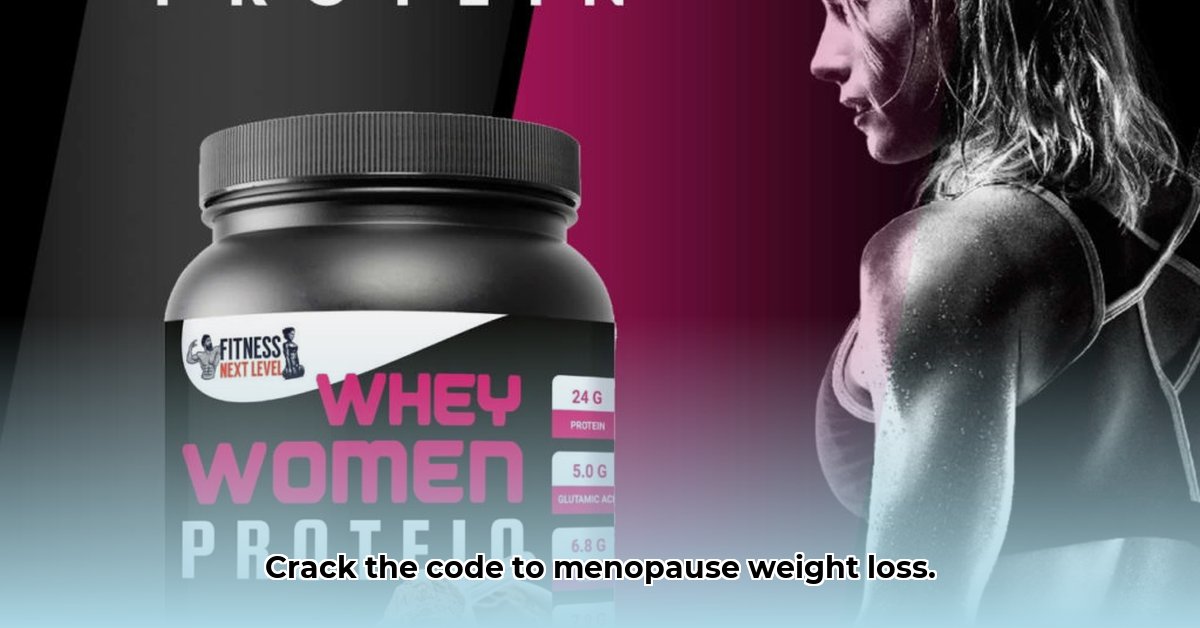
Menopause brings significant hormonal shifts that can impact metabolism and make weight management challenging. Muscle loss is common, and a slower metabolism can make it harder to maintain a healthy weight. However, incorporating the right protein into your diet can significantly aid in weight loss and overall well-being during this life stage. This guide provides expert advice on selecting the best protein powder for your specific needs. Are you ready to feel stronger and more confident?
Understanding Menopause and Protein Needs
Menopause triggers a decline in estrogen, leading to decreased bone density and muscle mass. This reduction in muscle mass lowers your resting metabolic rate (RMR), the number of calories your body burns at rest. A lower RMR makes weight loss more difficult. "Adequate protein intake is crucial for maintaining muscle mass and boosting metabolism during menopause," explains Dr. Emily Carter, Registered Dietitian at the Center for Women's Health. Protein helps preserve lean body mass, which in turn elevates your RMR, contributing to more efficient calorie burning. This is vital for managing weight and maintaining energy levels.
Types of Protein Powder: A Detailed Overview
Several types of protein powder cater to different dietary needs and preferences:
Whey Protein: Derived from milk, whey is a fast-digesting, complete protein (containing all essential amino acids). It's excellent for post-workout recovery but unsuitable for those with lactose intolerance.
Casein Protein: Also from milk, casein is a slow-digesting protein, ideal for consuming before bedtime to prevent muscle breakdown overnight. Again, lactose intolerance is a major consideration.
Soy Protein: A complete plant-based protein, soy is a good option for vegetarians and vegans. However, soy allergies are relatively common, so it’s important to carefully check for sensitivities.
Pea Protein: A hypoallergenic plant-based option, pea protein is generally well-tolerated. It may not be a complete protein source, so consider supplementing it with other protein sources or a blend.
Brown Rice Protein: Another plant-based choice, brown rice protein is hypoallergenic, but like pea protein can be incomplete. This again necessitates careful ingredient consideration.
Plant-Based Protein Blends: These blends combine several plant proteins to create a complete amino acid profile, addressing the potential incompleteness of single-source plant proteins.
Detailed Product Reviews: Top Contenders
The following table compares several leading protein powder brands. Remember, individual experiences can vary.
| Brand | Type | Protein (grams/serving) | Key Advantages | Potential Drawbacks | Price (approx.) |
|---|---|---|---|---|---|
| Optimum Nutrition Gold Standard | Whey | 24 | High-quality, widely available, great taste | Lactose intolerance | $$$ |
| Myprotein Impact Whey Isolate | Whey Isolate | 23 | High protein, low lactose, budget-friendly | Taste may be polarizing | $$ |
| Sunwarrior Warrior Blend | Plant-Based Blend | 17 | Plant-based, complete amino acid profile, vegan | Lower protein per serving | $$$ |
| Form Nutrition Performance Protein | Plant-Based Blend | 30 | High protein, plant-based, high purity focus | Pricey, fewer flavor varieties | $$$$ |
| Bulk Powders Clear Whey Isolate | Whey Isolate | 20 | Low sugar, clear taste, high protein | Lactose intolerance, might not appeal to all tastes | $ |
(Note: Prices are approximate and can vary based on retailer and size.)
Choosing the Right Protein Powder: A Personalized Approach
Answer these questions to find your perfect match:
Dietary Restrictions: Are you vegan, vegetarian, or have any allergies or intolerances (e.g., lactose, soy)?
Budget: Set a realistic budget to guide your selection.
Fitness Goals: Are you prioritizing muscle building, maintenance, or general wellness?
Taste Preferences: Choose a flavor you'll enjoy to ensure consistency.
How to Use Protein Powder Effectively
Timing: Consuming protein powder after workouts aids muscle recovery. Adding it to smoothies or yogurt is a convenient way to increase daily protein intake.
Mixing: Follow the manufacturer's instructions carefully to achieve a smooth consistency.
Potential Side Effects: Some users experience digestive issues initially. Start with a small amount and gradually increase intake.
Conclusion: Your Journey to a Healthier You
Choosing the right protein powder can be a game-changer during menopause. By considering your individual needs, dietary preferences, and budget, you can find a supplement that supports your weight loss goals and improves your overall well-being. Remember to consult with your doctor or a registered dietitian before making significant dietary changes.